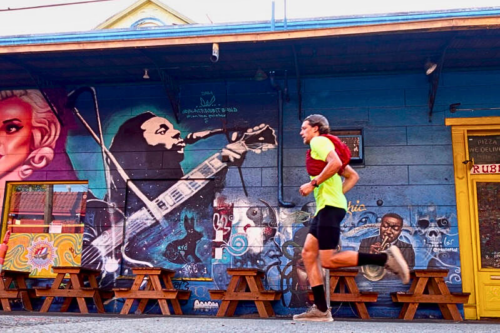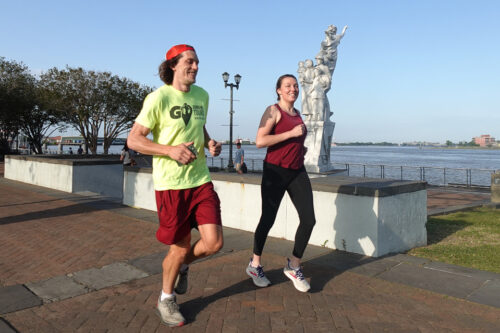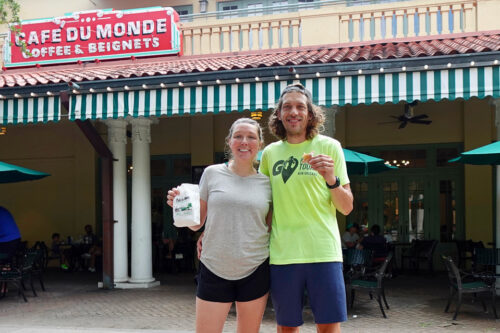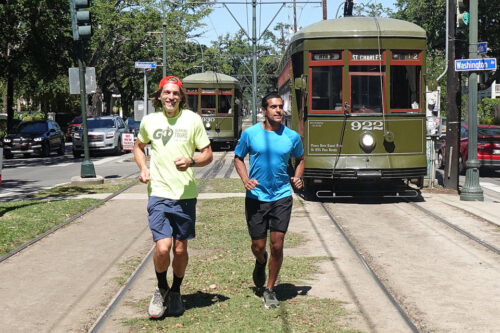ALL RUNNING TOURS IN NEW ORLEANS |
|---|
SIGHTSEEING RUNNING TOURS IN NEW ORLEANS
“JUST RUN” RUNNING TOURS IN NEW ORLEANS
CORPORATE TOURS IN NEW ORLEANS
Bulbancha was the indigenous name for the area commonly referred to now as New Orleans. The indigenous name meaning “Land of Many Tongues” is a much richer and accurate title for this city nestled just above the mouth of the mighty Mississippi River. The area boasts abundant ecological resources and navigable waterways, which made it a trading hub for indigenous populations from all over the Americas and later for European Colonizers. Lake Ponchartrain and Bayou St. John are some of the more peaceful places to run and imagine a time without the modern city.
The Spanish made first contact but were repelled by the native population. The French “founded” New Orleans, the Spanish made it a city, the French took it back and finally the city was purchased from Napoleon by Thomas Jefferson (perhaps illegally) on behalf of the United States. The iconic architecture reflects these periods of who was in control as the city expanded but it is still uniquely New Orleans. This city was a major hub of the trans-Atlantic slave trade and later the domestic trade within the United States. The influence of African Americans on the area goes back even before that to when enslaved people who escaped plantations in Mexico made their way to the area seeking safety in maroon camps and assimilating into the native villages. The music style, cuisine, Mardi Gras celebrations, and basically everything else that makes New Orleans what it is, would not have been possible without its strong black community. Waves of immigrants from around the world have continuously helped to create NOLAs vibrant culture. If you take our must-see sights tour, you will experience this unique story as we pass by places like Jackson Square, St. Louis Cathedral, and Congo Square. We will also see the only two French buildings left in the French Quarter and dip into the Tremé, the oldest African American neighborhood.
Go! Running Tours New Orleans offers plenty of options to dive deeper into how the melting pot became the gumbo pot. Running is very popular in the city as it boasts lots of green space and bike/pedestrian lanes. You can almost always find people running along the nicely packed dirt of the streetcar lanes or making their way through city parks infinite routes. There are not many hills unless you know where to find them. Luckily your friendly, local tour guide will know where to find whatever you are looking for from a sight running tour and we will be able to give you a few pointers on how to get off Bourbon Street and experience all of what New Orleans has to offer.




